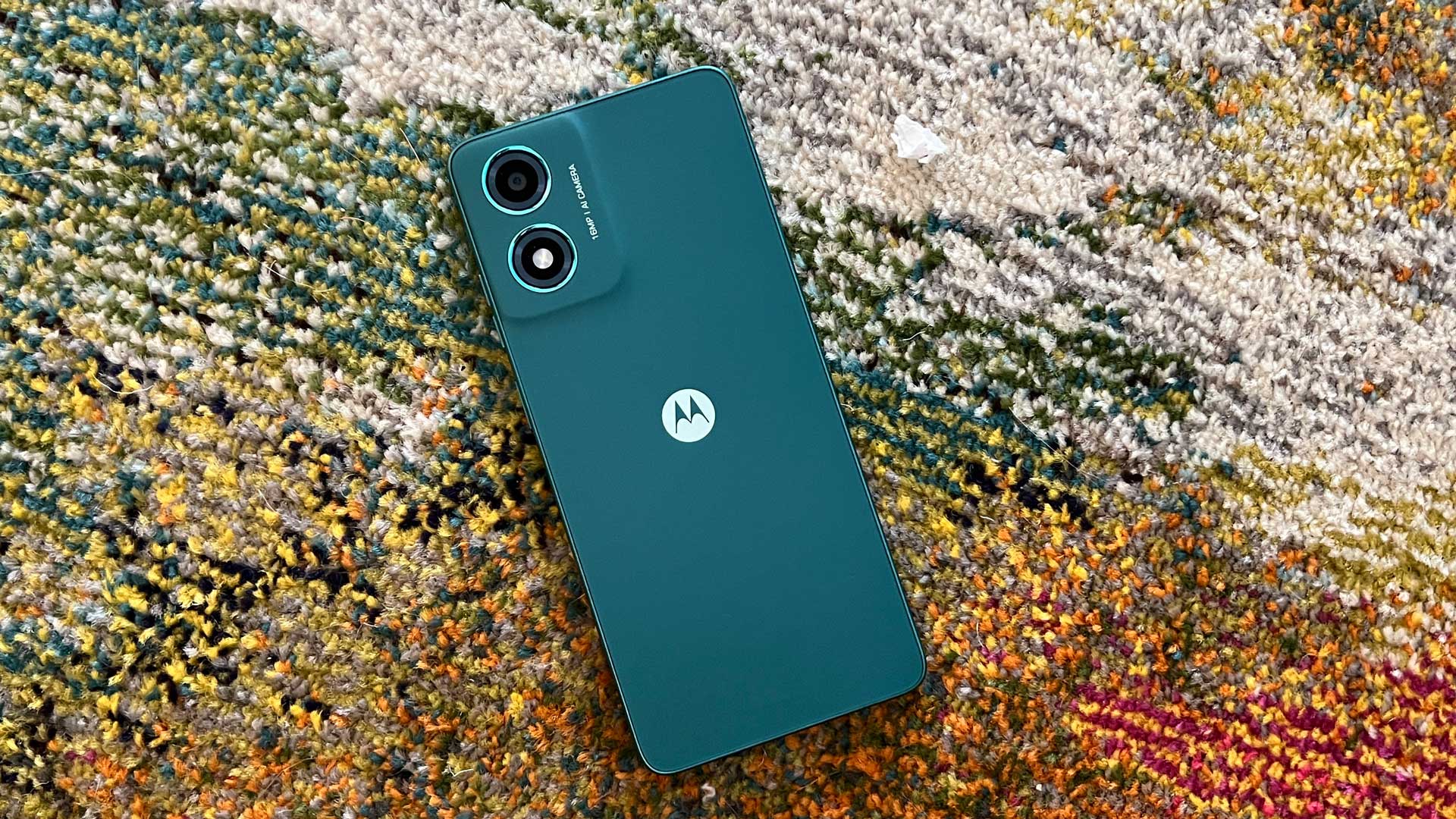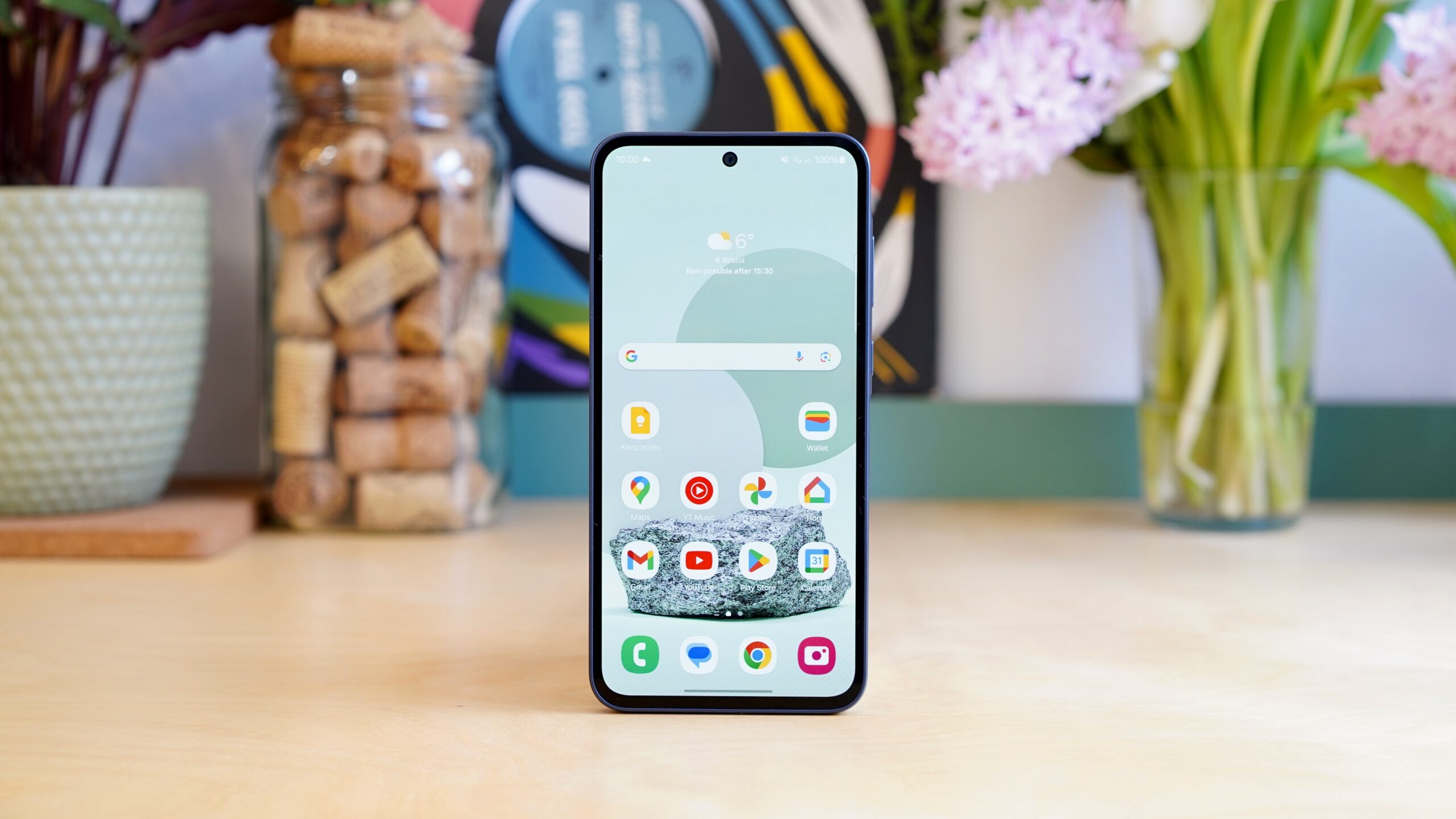Motorola Moto E20 Review
How good can a phone this cheap be?

Verdict
The Moto E20 is extremely cheap and solidly built, and Motorola’s software is as blissfully clean as ever. However, the poor quality of the phone’s display and the generally sluggish level of performance are difficult to ignore, regardless of price. As always, the real value in the smartphone market can be found somewhere north of the £100 mark.
Pros
- Very cheap
- Solid build quality
- Camera not bad for the money
Cons
- Poor 720p display
- Sluggish performance
- Night shots are a no-no
Key Features
- Good batteryReliable endurance throughout the day
- Decent cameraSome surprisingly good shots for the price
- Solid build qualityTypically good Motorola build
Introduction
When it initially launched back in September 2021, the Moto E20 was already the most affordable phone in Motorola’s line-up. Now, more than a year on, this handset is still its cheapest option.
Given that the economy has only grown more perilous in the months since its launch – with less free cash sloshing around than ever – it’s worth checking out just how viable the Moto E20 is. At an RRP of just £89.99, and with frequent offers bringing down that price even further, it deserves a closer look.
Design and Screen
- Robust plastic build
- Rear-mounted fingerprint sensor
- Low-res 720p display
Nobody expects a sub-£100 smartphone to look or feel particularly great, but Motorola knows how to operate on a strict budget. There’s a reason that the slightly more expensive Moto G line has become the go-to brand for affordable phones over the years.
While the Moto E20 won’t win any beauty competitions for its plastic unibody design, Motorola has worked hard to optimise its limited resources. At 164.8 x 75.5 x 8.5mm and 184g, it’s firmly in the smartphone sweet spot of not being too thick or too heavy.
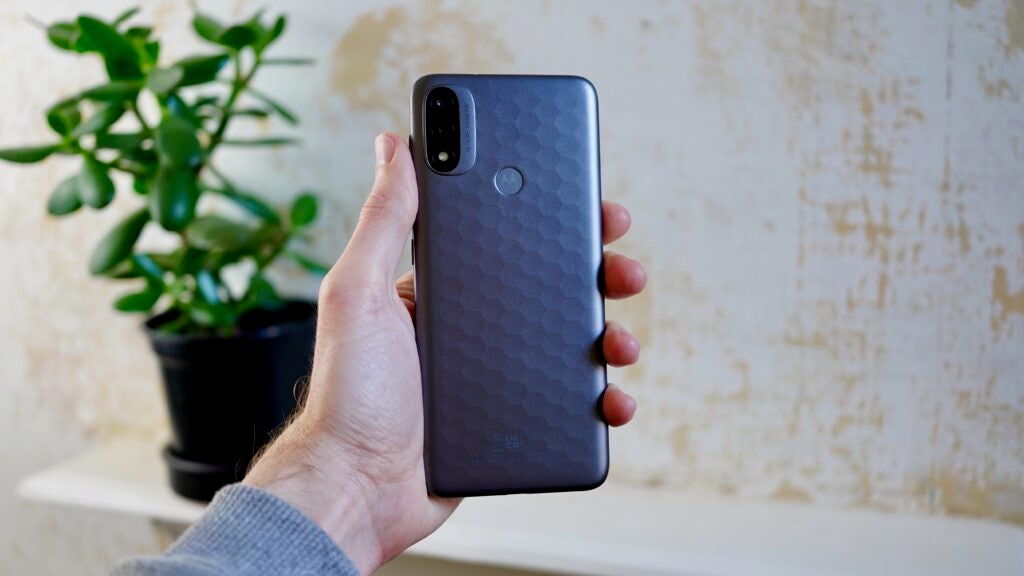
Motorola has mastered the art of minimising creak and flex from ostensibly cheap materials, and that holds true even here at the very bottom of the range. Sure, you can make the whole thing click a little if you apply some pressure, but the overwhelming feeling is of reassuring solidity.
The company has even found a way to inject a little flair into its design in the form of a subtle hexagon pattern etched into the plastic. As well as looking a little different, it also adds a slight undulating feel to the phone, which may also make it a bit grippier.
Another detail of the phone’s rear is its old-school fingerprint sensor. I’m used to phones switching this around to underneath the display at the front, or at least stashing it behind the power button on the edge. But given that the price is so low here, it’s not such a bad provision. My main issue with the sensor is that it’s so slow to unlock, and this has nothing to do with its placement.
While Motorola has worked its design magic to make this cheap plastic phone feel not terrible, there’s nothing it could have done about the display. It’s perfectly serviceable for day-to-day tasks, but you wouldn’t want to indulge in any long-form media content or extensive web-browsing sessions on it.
At 6.5 inches, it’s plenty large, and it gets bright enough for indoor usage, although you’ll be looking for shade when you’re outdoors on brighter days. Even the colours are reasonably vibrant, considering it’s such a low-grade LCD.
But with a resolution of 720 x 1600, or 720p, the Moto E20’s display simply isn’t sharp enough to show media and web content at anything close to its best. Needless to say, the refresh rate won’t go past 60Hz either. However, given this phone’s humble performance, that’s probably a good thing.
This is evidently a compromise Motorola had to make because of that super-low price tag. All I’d say is that spending more than £100 to ensure an FHD+ display would be worth every penny if you can possibly stretch to it, regardless of what you do with your phone.
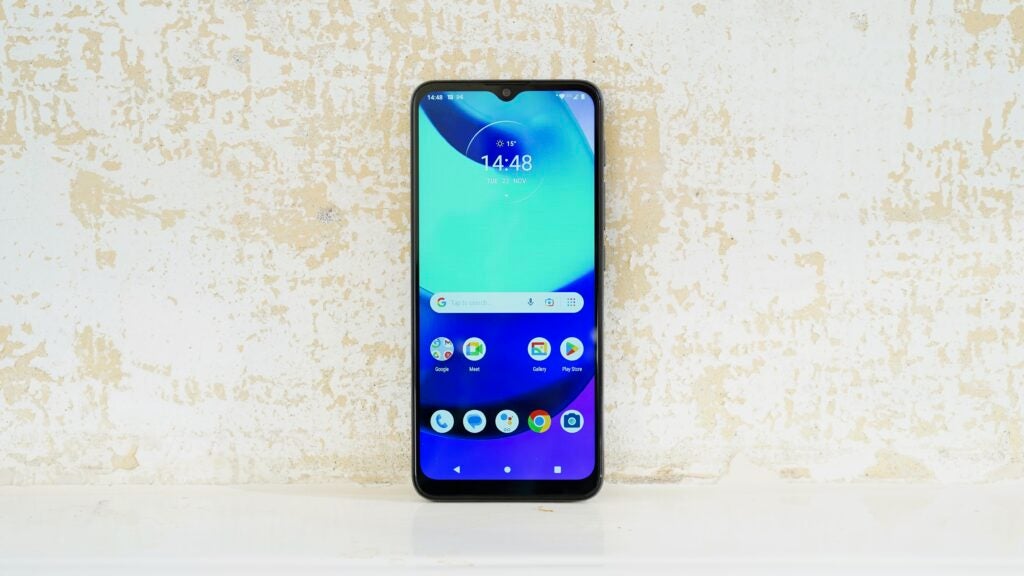
Camera
- 13-megapixel main, 2-megapixel macro
- Reasonable shots in good light (for the money)
- No night mode
The Moto E20 comes with a humble camera setup that involves a 13-megapixel wide sensor and a 2-megapixel macro sensor, with a 5-megapixel selfie camera at the front.
It’s a humble setup, but you’d expect nothing else from a £90 phone. After all, camera tech is one of the biggest investments for any manufacturer.

I’m pleased to announce that the Moto E20 does a respectable job for the money. None of the pictures I took had me swearing off the best camera phones – you’ll still need to spend more for genuinely good results – but the results I got were far from terrible.
That’s true of the shots I took in good natural lighting, at least. They looked reasonably sharp and had colours that broadly resembled the scene as I saw it. Skin tones were decidedly non-ghoulish, and close-ups even yielded some convincing bokeh.
HDR isn’t turned on by default, which is a little annoying, but that’s clearly a nod to the phone’s limited performance. When activated, it does reasonably well to brighten up and even out shady shots.


Things swiftly fell apart as soon as the light dropped, however. Indoor restaurant shots weren’t quite as disastrous as they could have been, but night shots were a total write-off. There’s no dedicated Night mode, and the automatic shots I took in low light conditions came out completely unusable – a noisy, poorly focused mess.
Selfie shots aren’t a disaster, but you’ll need to watch out for those HDR situations with extremes of light and shade, as the 5-megapixel front camera won’t be able to cope.


Performance
- Very limited Unisoc T606 CPU
- Only 2GB RAM
- 32GB storage plus microSD slot
The Moto E20 runs on a Unisoc T606 processor, which is – you guessed it – an extremely humble piece of silicon.
Sure, it’s been used in far newer and more expensive devices, such as the £150 Nokia G21. But what was deeply underwhelming in that phone is only slightly less underwhelming here – especially with a mere 2GB rather than 4GB of RAM backing it up.
That last part illustrates how hamstrung the Moto E20 is from a performance point of view. Android is a relatively thirsty mobile OS, and typically runs best on 4GB of RAM and above. The result here is a generally sluggish, jerky performance, with apps taking ages to boot up and not sticking around long in memory when switching between them.
The resulting benchmark tests confirm what a low-end performer this is. Geekbench 5 multi-core scores of around 704 are just about as low as it gets, with even the deeply unremarkable £140 TCL 30 SE scoring 877 by comparison.
In GPU terms, the Moto E20 scored better than both its big brother the Moto G22 and the TCL in the 3DMark Sling Shot tests. Like those other phones, the Moto E20 wouldn’t even run the more demanding Wild Life tests due to its limited hardware setup.
Motorola is well known for using a clean interpretation of Android, and in the Moto E20, it’s cleaner than ever. That’s because the brand has used the Android Go edition, which is a heavily scaled-back take on Google’s OS that’s been optimised for cheaper hardware.
One telltale result of this is that you get the Google Gallery app pre-installed, instead of the full-fat Google Photos that comes with most other Android phones. The onus is clearly on taking the strain off that creaky old processor and limited RAM.
It’s based on Android 11, so it’s quite outdated by this point. There’s no denying it’s still a pleasant enough OS to use, though, with a blissful lack of bloatware or ugly custom UI elements. Those performance issues and that limited display take the shine off somewhat, but I can think of a couple of £1,000 flagship phones that would benefit from a switch to this old, lightweight OS.
On the storage front, you’ll have to make do with 32GB, which is nothing. Even sub-£200 phones are including 128GB these days. You do get a microSDXC slot, though, so there’s expansion potential, at least.
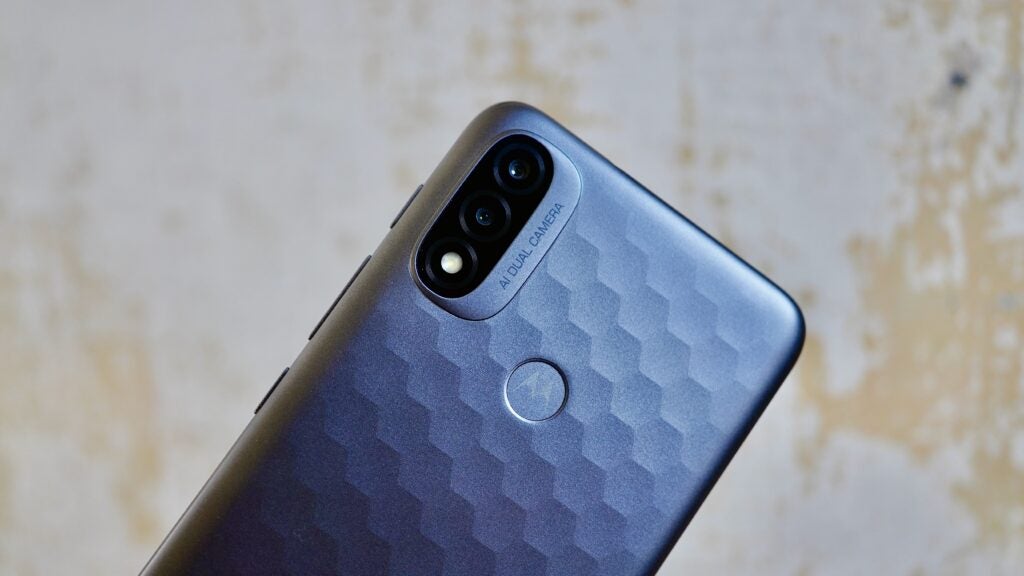
Battery Life
- Small 4000mAh battery
- Comfortable all-day stamina
- Slow 10W charger
The Moto E20 uses a 4,000mAh battery, which is pretty small by modern Android standards. Still, with that 720p display, the lower-grade CPU and lightweight Android Go OS, you’re hardly going to be drawing a lot of power.
Sure enough, in my tests, an hour of Netflix streaming with the screen brightness set to 50% sapped just 2% off a full charge. An hour of YouTube Music streaming, meanwhile, didn’t even make the battery drop below 100%. That’s actually fractionally better than the Moto G22 with its 5,000mAh battery.
It’ll comfortably last you a full day and more on a single charge. Add in the fact that no owner of the Moto E20 is likely to be what you’d term a “power user”, and it’s safe to say that battery life is of no concern here.
You only get a 10W wired charger in the box, however, which isn’t fast at all. You’re looking at a zero to 100% charge time of about 2hrs.
Latest Deals
Should you buy it?
You don’t want fussy software: Android Go is as no-nonsense an OS as you can hope for, with no bloatware or UI adornments whatsoever.
You take a lot of photos at night: The Moto E20’s camera isn’t a write-off by any means, but it’s entirely incapable of taking night shots.
Final Thoughts
Motorola has done a typically exemplary job of turning out a solid, competent cheap phone. The Moto E20 is well built, while its Google One software is blissfully clean and free of bloatware.
Inevitably, however, there’s only so much fat you can trim away before you start cutting into the important stuff. In the case of the Moto E20, that means a poor 720p LCD display and ruinously sluggish performance.
This phone’s camera is surprisingly competent in good lighting – for the money, at least. But even here, the prospect of taking any sort of shot in low lighting is pretty much off the table.
If your smartphone budget doesn’t stretch to anywhere near the three-figure mark, then the Moto E20 is as good an entry point as any. Just know that saving up for about double the asking price (which is still cheap) will exponentially improve your experience.
How we test
We test every mobile phone we review thoroughly. We use industry standard tests to compare features properly and we use the phone as our main device over the review period. We’ll always tell you what we find and we never, ever, accept money to review a product.
Find out more about how we test in our ethics policy.
Used for over a week
Camera tested in a variety of conditions
FAQs
Yes, you get a charger included with this phone.

